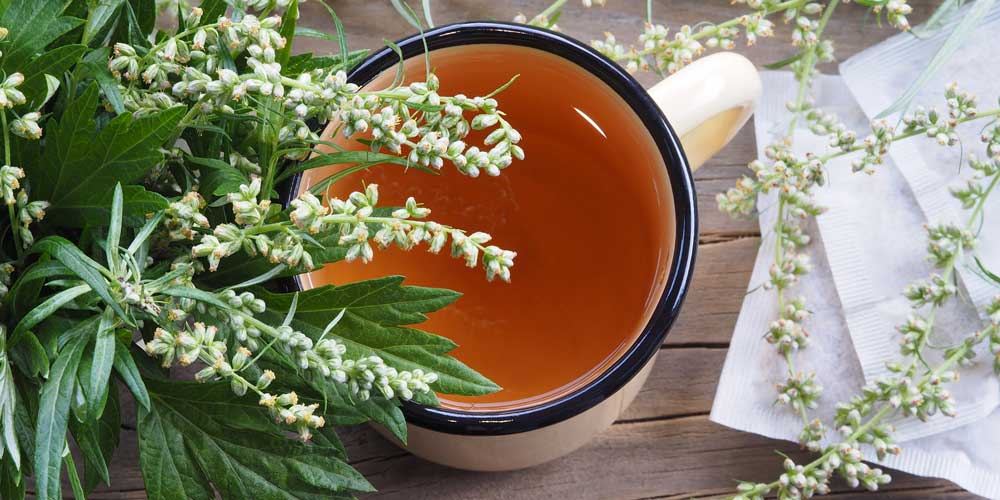Mugwort (Artemisia vulgaris) is an incredibly versatile herb that has been valued for centuries for its medicinal, culinary, and aromatic properties. Known for its hardy nature, Mugwort is a perennial herb that thrives in a variety of growing conditions, making it an excellent choice for gardeners looking to add a useful and beautiful plant to their landscape. Its distinctive green leaves, aromatic scent, and purple-tinted flower heads not only make it an attractive addition to any garden but also an incredibly practical one.
Common Names: mugwort, common wormwood, wild wormwood, chrysanthemum weed.
In this guide, we’ll explore everything you need to know about growing and using Mugwort, including its history, medicinal benefits, culinary uses, and the best ways to cultivate it in your garden. Whether you’re an experienced gardener or a beginner looking to expand your plant collection, Mugwort is a plant that can offer something for everyone. We’ll also dive into some important tips for keeping your plants healthy and even touch on whether or not it’s safe for your pets.
Beyond just being a hardy plant to grow, Mugwort has a rich historical background, having been used by many cultures for centuries for its wide range of benefits. Its leaves and roots have been used in teas, tinctures, and even as a flavoring for foods, while its aroma has made it a popular ingredient in incense and natural pest repellents.
Join us as we uncover the many uses and care tips for this fascinating herb, and learn how you can incorporate Mugwort into your garden and daily life to reap its full benefits.
Table of Contents
- What is Mugwort?
- The History of Mugwort
- Medicinal Uses of Mugwort
- Is Mugwort the Same as St John’s Wort?
- Is Mugwort Edible? Can You Eat It?
- Is It Better to Grow Mugwort from Seed or Cuttings?
- How to Grow Mugwort from Seed
- How to Harvest Mugwort
- Mugwort and Your Pets: Is It Toxic?
- Mugwort Care Tips
- Other Uses of Mugwort
What is Mugwort?
Mugwort, scientifically known as Artemisia vulgaris, is a perennial herb that belongs to the Asteraceae family. Native to Asia, Europe, and parts of North America, Mugwort has become quite popular in gardens across Australia due to its versatility and hardy nature. It thrives in a variety of climates, making it an ideal herb for many gardeners. Mugwort is known for its distinctive green, aromatic leaves and its beautiful purple-tinged flower heads, which bloom in late summer to early autumn.
Botanical Features of Mugwort
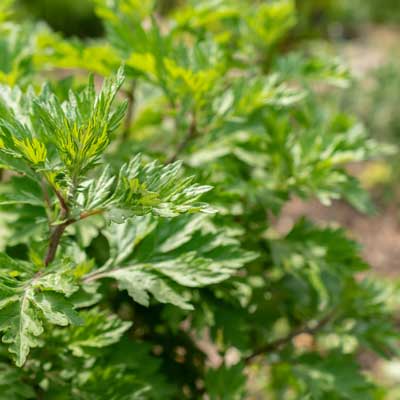 Mugwort is a bushy, fast-growing herb that can reach heights of up to 1.5 meters, though it is typically smaller in most gardens. The plant has several notable features that make it unique:
Mugwort is a bushy, fast-growing herb that can reach heights of up to 1.5 meters, though it is typically smaller in most gardens. The plant has several notable features that make it unique:
- Leaves: The leaves of Mugwort are deeply lobed, giving them a distinct, fern-like appearance. They are green on the upper side and a silvery-grey underneath, which helps to reflect sunlight and conserve moisture. The leaves have a strong, aromatic scent when crushed, and their fragrance is often described as a mixture of sage and wormwood. The leaves can grow up to 10 cm long and are often used in culinary and medicinal preparations.
- Stems: The stems of Mugwort are tall, erect, and covered in fine, soft hairs. They are often a reddish-brown or greenish color and have a slightly woody texture as the plant matures. The stems are flexible and can branch out, creating a dense, bushy growth habit. They support the plant’s leaves and flowers and are also aromatic when crushed.
- Flowers: Mugwort produces small, clustered flower heads that are purple or reddish in color. These flowers are not particularly showy but attract various pollinators like bees and butterflies. The flowering period is late summer to early autumn, and the plant’s ability to bloom for several weeks makes it an attractive addition to any garden.
- Roots: Mugwort has a deep, fibrous root system that helps it to survive in dry conditions. The roots can spread extensively underground, which is one reason why Mugwort can become invasive if left unchecked. The root system also allows the plant to store energy for the winter, making it a hardy perennial that can survive colder temperatures.
Due to its deep root system and robust growth habit, Mugwort can quickly become a dominant feature in a garden if not carefully managed. To prevent it from becoming too invasive, make sure to prune it regularly and keep it contained in a specific area of your garden. While it can spread rapidly, it is also resilient and can withstand drought, making it a great choice for low-maintenance gardens.
Mugwort’s hardiness and its attractive, aromatic foliage make it not only a valuable herb for its medicinal and culinary uses but also a beautiful addition to any garden. Its ability to thrive in a wide range of conditions means it can easily be incorporated into Australian gardens, where it will flourish with minimal care.
The History of Mugwort
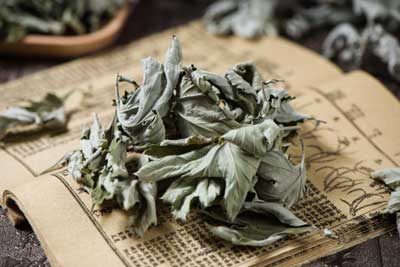 Mugwort has a long and fascinating history, dating back thousands of years. It was used in ancient cultures across Europe, Asia, and North America, and was considered a sacred plant in many traditions. In ancient Greece, it was believed to have protective properties, and was often carried as an amulet or burned as incense to ward off evil spirits. The name “Mugwort” comes from the Old English word “mugwyrt,” where “mug” refers to a drink and “wyrt” means plant, highlighting its use in brewing herbal drinks.
Mugwort has a long and fascinating history, dating back thousands of years. It was used in ancient cultures across Europe, Asia, and North America, and was considered a sacred plant in many traditions. In ancient Greece, it was believed to have protective properties, and was often carried as an amulet or burned as incense to ward off evil spirits. The name “Mugwort” comes from the Old English word “mugwyrt,” where “mug” refers to a drink and “wyrt” means plant, highlighting its use in brewing herbal drinks.
In traditional Chinese medicine, Mugwort has been used for centuries to treat various ailments, particularly digestive issues, menstrual cramps, and even to promote the flow of energy (Qi) throughout the body. Similarly, in European herbalism, it was used as a remedy for digestive problems and as a mild sedative. Its calming effects were also thought to be useful for relieving stress and anxiety.
Today, Mugwort is still popular in various cultures for its medicinal and culinary uses, and it continues to be celebrated for its versatility. Whether in tea, as a flavoring, or for its healing properties, Mugwort remains a cherished herb with a rich history.
Medicinal Uses of Mugwort
Mugwort has been used for centuries in traditional medicine. It is known for its calming properties, especially in treating digestive issues like bloating and indigestion. Some people use it to help with anxiety and to improve sleep. Mugwort is also believed to have mild pain-relieving properties, which makes it helpful in easing menstrual cramps. However, it’s always a good idea to check with a healthcare professional before using Mugwort for medicinal purposes.
Is Mugwort the Same as St John’s Wort?
No, Mugwort and St John’s Wort are not the same plant, although their names sound similar. St John’s Wort (Hypericum perforatum) is another herb known for its mood-boosting properties, but it belongs to a different plant family. While they both have medicinal uses, they should not be confused with each other. Mugwort is more commonly used for digestive health, while St John’s Wort is often used for its antidepressant effects.
Is Mugwort Edible? Can You Eat It?
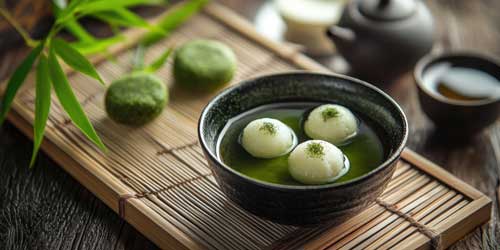
Yes, Mugwort is edible, and many people use its leaves in cooking or make tea from them. However, some people may have an allergic reaction to Mugwort, so if you’ve never eaten it before, start with a small amount to see how your body reacts. Mugwort should always be consumed in moderation, as large amounts can cause digestive issues.
In the kitchen, Mugwort is used to add a unique flavor to many dishes. The leaves have a slightly bitter, herbal taste and are commonly used in Asian cuisine. You can use fresh or dried Mugwort to flavor meats, stews, and soups. In some cultures, it’s also used to flavor tea or as an ingredient in certain traditional desserts.
If you’re interested in adding Mugwort to your culinary adventures, start by adding small amounts to your dishes and experimenting with its flavor. It pairs well with rich and savory foods, especially fatty meats like lamb or pork.
Is It Better to Grow Mugwort from Seed or Cuttings?
Both growing Mugwort from seed and from cuttings are great options, but each method has its own advantages.
- Growing from Seed: Growing Mugwort from seed is the most common method. It’s easy and inexpensive, and you can start your plants indoors before the last frost. Seeds allow you to start fresh plants with a wider variety of genetic traits.
- Growing from Cuttings: If you have a mature Mugwort plant, you can propagate it by taking cuttings. This is a faster way to get new plants that are genetically identical to the parent plant. Growing from cuttings can be a good option if you want to quickly expand your Mugwort collection without waiting for seeds to sprout and grow.
If you’re new to growing Mugwort, starting with seeds is often the easiest and most reliable way. However, if you have access to a healthy, mature plant, taking cuttings can give you a head start in your garden.
How to Grow Mugwort from Seed
Growing Mugwort from seed is easy and rewarding. Here’s how you can do it:
- Start Seeds Indoors: Sow seeds indoors around 6-8 weeks before the last frost in your area.
- Planting Outdoors: Once the weather warms up and there’s no more frost, plant the seedlings in a well-draining soil spot that receives plenty of sunlight.
- Watering: Mugwort is drought-tolerant, but it’s important to keep the soil moist while the plants are young.
- Space Them Out: Space your plants about 60-90 cm apart to give them room to grow and spread.
With its hardiness and easy maintenance, Mugwort will be a valuable addition to your garden in no time.
How to Harvest Mugwort
Harvest Mugwort in the late summer or early autumn when the plant is at its peak. To do this:
- Cut the leaves or stems with a clean pair of scissors or pruning shears.
- Only take a portion of the plant to allow it to continue growing and producing more leaves.
Mugwort Care Tips
Mugwort is an easy-to-care-for herb, making it a perfect addition to any garden, even for novice gardeners. Here are some tips to help ensure your Mugwort plant thrives:
- Sunlight: Mugwort loves sunlight and should be planted in a location that receives full sun for at least 6 hours a day. While it can tolerate partial shade, it grows best in bright, sunny spots.
- Soil: Mugwort is not fussy about soil but prefers well-draining soil. It can grow in poor, dry soil, making it a great choice for gardeners looking for a hardy herb. However, it does best in slightly acidic to neutral soil.
- Watering: Although Mugwort is drought-tolerant once established, it will benefit from regular watering during its early stages. Be sure not to overwater, as it doesn’t like soggy soil. Once mature, it requires less frequent watering.
- Pruning: To prevent Mugwort from becoming invasive, it’s a good idea to prune it regularly. You can trim back the plant to control its growth and remove dead or damaged stems to keep it looking neat.
- Mulching: Applying mulch around the base of the plant can help retain moisture and keep the roots cool. This is especially helpful in hot climates, like Australia, where the sun can quickly dry out the soil.
Mugwort and Your Pets: Is It Toxic?
Mugwort is generally safe for pets, but as with any plant, it’s important to ensure they don’t consume large quantities. If you suspect your pet has ingested a harmful amount of Mugwort, contact your veterinarian for advice.
Other Uses of Mugwort
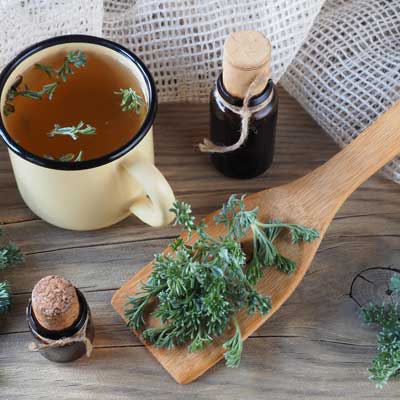 Besides its medicinal and culinary uses, Mugwort has several other applications that might interest gardeners and plant enthusiasts:
Besides its medicinal and culinary uses, Mugwort has several other applications that might interest gardeners and plant enthusiasts:
- Aromatic Uses: The aromatic leaves of Mugwort make it a popular choice for sachets, potpourri, and even moth repellent. Placing dried Mugwort around your home can help keep pests like moths at bay while adding a pleasant herbal scent to your living space.
- Traditional Crafting: In some cultures, Mugwort is used in weaving and crafting. The stems can be used to make wreaths, baskets, and other crafts, adding an earthy and natural touch to handmade items.
- Cosmetic Uses: Mugwort is sometimes included in skincare products for its soothing properties. Its anti-inflammatory effects make it a useful ingredient in lotions and creams aimed at calming irritated skin or reducing redness.
With all of these practical uses, Mugwort is a truly versatile plant that offers much more than just beauty in the garden.
Start Growing Mugwort Today!
Whether you’re interested in its medicinal, culinary, or gardening benefits, Mugwort is a versatile and useful herb for any Australian garden. Get your Mugwort seeds today and start your gardening journey with this amazing herb!

